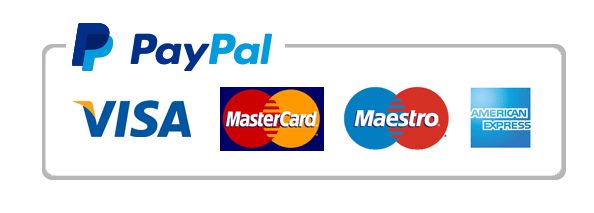
-
Report ID 138281 -
Published Date August 2024 -
Delivery Format PDF/PPT/Word -
Editor's Rating
-
Report Details
Report Overview
The Global Recipe App Market size is expected to be worth around USD 2,268 Million By 2033, from USD 667.3 Million in 2023, growing at a CAGR of 13.5% during the forecast period from 2024 to 2033. In 2023, North America maintained a leading position in the recipe app market, securing over 35.7% of the market share
A recipe app is a mobile application that provides users with a wide range of recipes and cooking instructions. It serves as a digital platform where users can search for recipes, save their favorite ones, create shopping lists, and even receive personalized recommendations based on their dietary preferences. These apps typically offer a variety of cuisines, dietary restrictions, and cooking techniques to cater to diverse user needs.
The recipe app market has experienced significant growth due to increasing consumer interest in home cooking, dietary management, and the ease of accessing diverse culinary recipes through smartphones. These apps not only provide step-by-step cooking guides but also integrate features such as meal planning, grocery shopping lists, and nutritional tracking, enhancing their appeal among health-conscious users. The surge in smartphone usage and the proliferation of mobile applications have further propelled this market forward.
Demand for recipe apps has been driven by a combination of factors. With the global rise in health awareness, more individuals are opting to cook at home to control their diet and ingredient quality. The convenience of having recipes readily available on mobile devices has also contributed to the increased use of these apps. Additionally, the social aspect of sharing recipes and culinary achievements on social media platforms has encouraged more users to engage with these apps, thereby fueling the demand.

Several key growth factors are catalyzing the expansion of the recipe app market. Technological advancements have led to more sophisticated app features, such as personalized recipe recommendations based on dietary restrictions and flavor preferences, and interactive elements like video tutorials. The integration of artificial intelligence for customized meal planning and virtual cooking assistants has further enhanced user engagement.
Moreover, partnerships between app developers and food and lifestyle influencers have successfully attracted a broader audience. The market for recipe apps presents numerous opportunities for development and monetization. There is significant potential in expanding into new regional markets, especially in areas with increasing internet penetration and mobile device ownership.
Developing multi-lingual versions of apps can cater to a diverse global audience, enhancing user base growth. Additionally, incorporating features like online grocery integration, where users can directly purchase ingredients for recipes, could open new revenue streams through partnerships with retailers and enhance user convenience.
Moving forward, the market is expected to continue its expansion, driven by technological advancements and an increasing emphasis on health and wellness. In 2023, a notable 53% of adults in the U.S. engaged with a recipe app or website at least once per month, indicating a robust integration of digital tools in culinary practices.
Social media platforms, including Facebook, Instagram, TikTok, YouTube, and Twitter, are extensively utilized for culinary inspiration, with over 70% of adults using these platforms for accessing recipes. This trend underscores the significant role of social media in meal planning and daily cooking habits. Focusing on generational preferences, Millennials (ages 25-34) are particularly inclined towards using digital aids while cooking.
Research indicates that 59% of this demographic regularly use smartphones or tablets in the kitchen, suggesting a strong adoption of technology in meal preparation among younger adults. Furthermore, the average time spent by users on recipe apps is approximately 25 minutes per day, reflecting substantial engagement and reliance on these digital platforms for cooking and meal planning.
Key Takeaways
- The Global Recipe App Market size is expected to be worth around USD 2,268 Million By 2033, from USD 667.3 Million in 2023, growing at a CAGR of 13.5% during the forecast period from 2024 to 2033.
- In 2023, the Free Apps segment held a dominant market position, capturing more than a 73.6% share.
- In 2023, the Android segment held a dominant market position, capturing more than a 71.4% share.
- In 2023, North America held a dominant market position in the recipe app market, capturing more than a 35.7% share.
North America Recipe App Market Growth
In 2023, North America held a dominant market position in the Recipe App Market, capturing more than a 35.7% share with revenues amounting to USD 238.2 million. This leadership is primarily driven by the region’s high smartphone penetration, advanced internet infrastructure, and a growing trend towards digitalization in daily life.
Consumers in North America increasingly rely on digital tools, including recipe apps, to manage their cooking routines, reflecting the broader trend of technology integration in the kitchen. Moreover, the North American market benefits from a strong culture of home cooking, spurred by a combination of health consciousness and economic factors.
As more people seek to prepare meals at home, the demand for convenient, easy-to-use recipe apps has surged. The availability of diverse culinary content, tailored to various dietary preferences and cultural cuisines, also enhances the appeal of these apps among a wide range of users.
Additionally, the region’s robust food and technology sectors have fostered innovation in recipe app features, including AI-driven meal planning, grocery list automation, and personalized recommendations. These advancements not only attract new users but also encourage existing ones to engage more frequently with the apps.

Europe followed closely, accounting for 31.2% of the market share. This significant uptake is driven by the region’s strong focus on lifestyle and wellness, with a substantial number of consumers seeking digital solutions for diet management and home cooking. Europe’s high internet penetration and the widespread use of smartphones also contribute to the substantial adoption of recipe apps. Furthermore, the localization of app content to meet diverse linguistic and cultural preferences across European countries has enhanced user engagement.
The Asia-Pacific region held 26.3% of the market share, driven by rapid digital transformation and increasing smartphone usage in populous countries such as China and India. The region’s growing middle class and rising disposable incomes have also made technology more accessible, increasing the number of potential app users. Moreover, Asia-Pacific’s rich culinary diversity offers significant content opportunities for recipe app developers, making the apps more appealing to the local populace.
Latin America and the Middle East & Africa, though smaller in market share at 4.1% and 2.8% respectively, are emerging markets with potential for growth. In Latin America, increasing internet penetration and smartphone affordability are beginning to influence digital habits, including cooking and dining.
Meanwhile, in the Middle East and Africa, although currently limited by lower technology penetration, there is gradual growth as more consumers gain internet access and become familiar with mobile applications. These regions present untapped opportunities for market expansion as digital infrastructure improves and consumer behaviors evolve towards mobile technology usage.
Type Analysis
In 2023, the Free Apps segment held a dominant market position, capturing more than a 73.6% share. The prevalence of free recipe apps is primarily driven by their accessibility and the minimal commitment required from users. These apps often generate revenue through advertisements and in-app purchases, allowing users to access a broad range of features without any upfront cost.
The convenience and cost-effectiveness of free apps have made them particularly attractive to a wide audience, including casual home cooks and those exploring new culinary interests without wanting to invest in paid options. The popularity of free apps can also be attributed to the extensive variety they offer. Many free apps provide thousands of recipes from different cuisines, complete with user reviews and ratings, making it easy for users to find and try new dishes.
Furthermore, the integration of user-friendly interfaces and engaging features such as video tutorials and interactive cooking guides enhances the overall user experience, fostering higher user engagement and retention. On the other hand, Paid Apps, though smaller in market share, cater to a niche audience seeking premium features and an ad-free experience. These apps often offer advanced functionalities such as personalized meal plans, exclusive recipes from renowned chefs, and integration with smart kitchen appliances.
While the Paid Apps segment accounted for a smaller portion of the market, it attracted users who value quality and are willing to invest in a more sophisticated and comprehensive cooking experience. The revenue from paid apps is generated through one-time purchases or subscription models, providing a steady income stream for developers while ensuring a premium user experience.
Platform Analysis
In 2023, the Android segment held a dominant market position, capturing more than a 71.4% share. The widespread adoption of Android devices globally has significantly contributed to this segment’s leadership. Android’s open-source nature and affordability have made it the preferred choice for many users, particularly in emerging markets where budget-friendly smartphones are prevalent.
This broad user base provides a large audience for recipe app developers, driving the proliferation of Android-compatible applications. The popularity of the Android platform in the recipe app market can also be attributed to its extensive reach and customization capabilities. Android devices offer a wide range of price points and features, making them accessible to a diverse demographic.
This diversity allows recipe apps to cater to various user preferences, from simple, straightforward apps for beginners to more complex, feature-rich apps for experienced cooks. Additionally, the Google Play Store’s relatively lower entry barriers enable developers to launch and update their apps more efficiently, ensuring a steady flow of new and improved recipe apps for Android users.
Conversely, the iOS segment, while capturing a smaller market share, appeals to a specific segment of users who prioritize premium devices and seamless integration with other Apple products. iOS users often benefit from high-quality, well-designed apps that leverage the robust hardware and software ecosystem of Apple devices.
Although the market share for iOS is less compared to Android, the platform attracts a dedicated user base willing to invest in paid apps and premium subscriptions. This segment’s higher monetization potential makes it an attractive market for developers seeking to generate higher revenue per user.

Top 5 Recipe Apps
- Yummly: This app is highly recommended for its personalization options. Yummly offers a meal planner, a built-in shopping list, and a “pantry-ready” search tool that suggests recipes based on the ingredients you have on hand. It also features voice control and provides access to video tutorials and guided recipes through a premium subscription.
- Epicurious: Known for its high-quality content, Epicurious emphasizes sustainable eating with features like a Seasonal Ingredients Finder. Although it is not available on Android, iPhone users can benefit from its voice control options and a smart timer to ensure perfect cooking results every time.
- BigOven: This app is excellent for those who enjoy community interaction. BigOven allows users to share recipes, read reviews, and get creative with the “Use Up Leftovers” feature. It offers a 30-day free trial, after which a Pro membership is available for a small fee, unlocking advanced features like ad-free browsing and unlimited recipe uploads.
- Tasty: Ideal for beginners, Tasty provides a vast collection of recipes that cater to various dietary needs, including vegetarian, vegan, and gluten-free options. Its “What’s in Your Kitchen” feature is particularly useful, allowing users to find recipes based on the ingredients they have at home.
- Paprika Recipe Manager 3: This app is perfect for those who love to organize their recipes. Paprika allows users to create grocery lists, plan meals, and sync their recipes across multiple devices. It supports importing recipes from other apps and websites, making it a comprehensive tool for meal planning and recipe management.
Key Market Segments
Type
- Free Apps
- Paid Apps
Platform
- Android
- ios
- Others
Key Regions and Countries
- North America
- US
- Canada
- Europe
- Germany
- France
- The UK
- Spain
- Italy
- Russia
- Netherlands
- Rest of Europe
- Asia Pacific
- China
- Japan
- South Korea
- India
- Australia
- Singapore
- Thailand
- Vietnam
- Rest of APAC
- Latin America
- Brazil
- Mexico
- Rest of Latin America
- Middle East & Africa
- South Africa
- Saudi Arabia
- UAE
- Rest of MEA
Driver
Growing Popularity of Home Cooking
The increasing interest in home cooking is a significant driver for the recipe app market. With a growing number of people seeking healthier lifestyles, there is a rising preference for homemade meals. Recipe apps provide users with easy access to a wide variety of recipes, enabling them to explore different cuisines and cooking techniques from the comfort of their homes.
Additionally, the convenience offered by these apps, such as step-by-step instructions, video tutorials, and ingredient lists, makes cooking more accessible and less time-consuming. This trend has been further accelerated by the COVID-19 pandemic, which has seen more people cooking at home due to lockdowns and social distancing measures. As a result, the demand for recipe apps has surged, driving market growth
Restraint
Compatibility Issues
One of the main restraints in the recipe app market is compatibility issues across different operating systems. Many apps are developed to function optimally on specific platforms, such as iOS or Android, but may not perform well on others. This lack of universal compatibility can limit the user base for certain apps.
Additionally, the frequent updates and changes in operating systems can create further challenges for developers, who must continuously adapt their apps to remain functional and up-to-date. This process requires significant time and financial investment, which can be a barrier for smaller developers and companies. Consequently, these compatibility issues can hinder the overall growth of the recipe app market
Opportunity
Expansion in Emerging Markets
Emerging markets present a lucrative opportunity for the recipe app market. With the rapid increase in smartphone penetration and internet connectivity in regions such as Asia-Pacific, Latin America, and Africa, there is a growing potential user base for recipe apps. These regions also have a burgeoning middle class with a rising interest in cooking and experimenting with new recipes.
By localizing content and offering culturally relevant recipes, app developers can tap into these new markets. Furthermore, partnerships with local food brands and influencers can enhance app visibility and adoption. Expanding into these emerging markets can significantly boost the growth of the recipe app market in the coming years.
Challenge
High Competition and Market Saturation
The recipe app market faces the challenge of high competition and market saturation. There are numerous apps available, offering similar features and content, making it difficult for new entrants to gain traction. Established players like Allrecipes, Yummly, and Tasty dominate the market, setting high standards for user experience and content quality. To stand out, new apps must offer unique features or superior functionality, which can require substantial investment in development and marketing.
Additionally, retaining users in such a competitive environment is challenging, as users may easily switch to other apps offering better features or more comprehensive recipe collections. Overcoming this competition and achieving sustainable growth remains a significant challenge for companies in the recipe app market.
Growth Factors
- Rising Smartphone Penetration: The global increase in smartphone usage has significantly expanded the potential user base for recipe apps. With more people having access to smartphones, the reach of these apps has broadened, especially in emerging markets.
- Health and Wellness Trends: A growing focus on healthy eating and wellness has driven the demand for recipe apps that offer nutritious and balanced meal options. Users are increasingly looking for apps that provide recipes catering to specific dietary needs, such as vegan, gluten-free, and keto diets.
- Technological Advancements: Innovations such as AI and machine learning are being integrated into recipe apps to offer personalized recommendations, meal planning, and interactive cooking assistance. These technologies enhance user experience and engagement, contributing to market growth.
- Convenience and Time-Saving: Recipe apps provide convenience by offering easy access to a vast database of recipes, along with features like grocery lists and meal planning. This convenience appeals to busy individuals and families looking to save time on meal preparation.
- Influence of Social Media: The popularity of cooking content on social media platforms has boosted interest in recipe apps. Influencers and food bloggers often promote these apps, driving downloads and user engagement through their large followings.
Emerging Trends
- Voice-Activated Assistance: The integration of voice assistants like Amazon Alexa and Google Assistant in recipe apps is becoming more common. This trend allows users to navigate recipes hands-free, making cooking more convenient and interactive.
- Augmented Reality (AR) and Virtual Reality (VR): Some recipe apps are beginning to incorporate AR and VR technologies to provide immersive cooking experiences. These features can guide users through complex recipes with visual aids and step-by-step instructions.
- Sustainability and Zero Waste Cooking: There is a growing trend towards sustainable cooking practices. Recipe apps are starting to feature content focused on reducing food waste, using seasonal ingredients, and promoting eco-friendly cooking habits.
- Integration with Smart Kitchen Devices: The integration of recipe apps with smart kitchen appliances, such as smart ovens and refrigerators, is on the rise. This connectivity allows for seamless execution of recipes and better kitchen management.
- Subscription-Based Models: More recipe apps are adopting subscription-based models, offering premium features such as exclusive recipes, personalized meal plans, and ad-free experiences. This trend is driven by the increasing willingness of users to pay for enhanced functionality and content.
Key Players Analysis
The Recipe App Market is a competitive landscape with several key players vying for user attention and market share. These players have established themselves as leaders in the industry by offering innovative features, expansive recipe databases, and user-friendly interfaces.
The recipe app market boasts several key players that have significantly shaped the industry landscape. BuzzFeed Inc., known for its engaging content, has leveraged its platform to offer innovative recipe solutions through its Tasty app. Yummly, owned by Whirlpool Corporation, stands out for its advanced recipe recommendation engine, providing users with personalized cooking suggestions based on their preferences and dietary needs.
Top Key Players in the Market
- BuzzFeed Inc.
- Yummly
- Samsung Food
- BigOven
- SideChef Inc.
- Cookpad Inc.
- Allrecipes
- Good Food
- NYT Cooking
- Kitchen Stories
- Paprika Recipe Manager
- Other Key Players
Recent Developments
- In March 2023, Samsung acquired Whisk, an AI-driven food platform, to enhance its Samsung Food app’s capabilities. This acquisition aims to integrate advanced meal planning and grocery shopping features into the app.
- In August 2023, Yummly introduced a new smart kitchen feature that allows users to connect their app with compatible kitchen appliances, providing step-by-step cooking instructions tailored to the appliances being used.
- In October 2023, Allrecipes launched a new meal planning and grocery list feature that syncs with major grocery delivery services, streamlining the cooking process from planning to execution.
- In July 2023, SideChef released a personalized nutrition and meal planning service, leveraging AI to recommend recipes based on individual dietary needs and preferences.
Report Scope
Report Features Description Market Value (2023) USD 667.3 Mn Forecast Revenue (2033) USD 2,268 Mn CAGR (2024-2033) 13.5% Base Year for Estimation 2023 Historic Period 2019-2022 Forecast Period 2024-2033 Report Coverage Revenue Forecast, Market Dynamics, COVID-19 Impact, Competitive Landscape, Recent Developments Segments Covered By Type (Free Apps, Paid Apps), By Platform (Android, iOS, Others) Regional Analysis North America – US, Canada; Europe – Germany, France, The UK, Spain, Italy, Russia, Netherlands, Rest of Europe; Asia Pacific – China, Japan, South Korea, India, New Zealand, Singapore, Thailand, Vietnam, Rest of APAC; Latin America – Brazil, Mexico, Rest of Latin America; Middle East & Africa – South Africa, Saudi Arabia, UAE, Rest of MEA Competitive Landscape BuzzFeed Inc., Yummly, Samsung Food, BigOven, SideChef Inc., Cookpad Inc., Allrecipes, Good Food, NYT Cooking, Kitchen Stories, Paprika Recipe Manager, Other Key Players Customization Scope Customization for segments, region/country-level will be provided. Moreover, additional customization can be done based on the requirements. Purchase Options We have three license to opt for: Single User License, Multi-User License (Up to 5 Users), Corporate Use License (Unlimited User and Printable PDF) -
Table Of Content
Research Insights & Deliverables
 Development and Future Forecast
Development and Future Forecast Competitive benchmarking
Competitive benchmarking Company Revenue Statistics
Company Revenue Statistics Rising Regional Opportunities
Rising Regional Opportunities Technology Trends and Dynamics
Technology Trends and Dynamics Technology Assessment
Technology Assessment
-
Inquiry Before Buying
Research Insights & Deliverables
 Development and Future Forecast
Development and Future Forecast Competitive benchmarking
Competitive benchmarking Company Revenue Statistics
Company Revenue Statistics Rising Regional Opportunities
Rising Regional Opportunities Technology Trends and Dynamics
Technology Trends and Dynamics Technology Assessment
Technology Assessment
-
Request Sample
Research Insights & Deliverables
 Development and Future Forecast
Development and Future Forecast Competitive benchmarking
Competitive benchmarking Company Revenue Statistics
Company Revenue Statistics Rising Regional Opportunities
Rising Regional Opportunities Technology Trends and Dynamics
Technology Trends and Dynamics Technology Assessment
Technology Assessment














